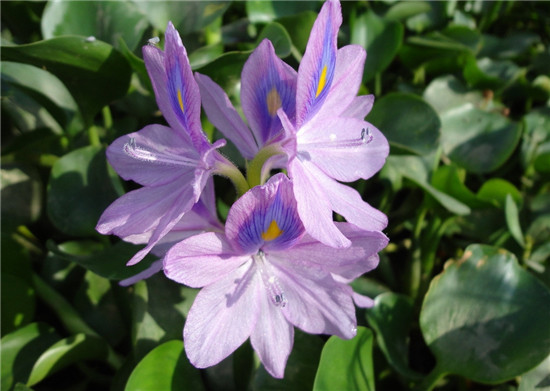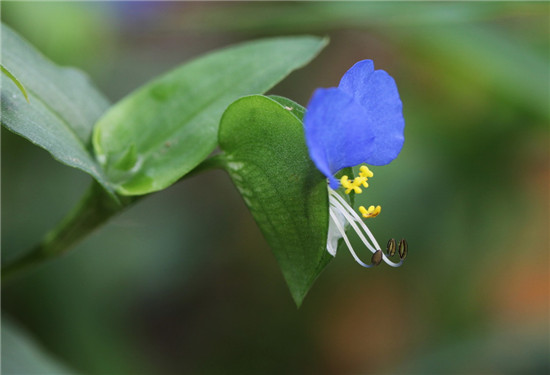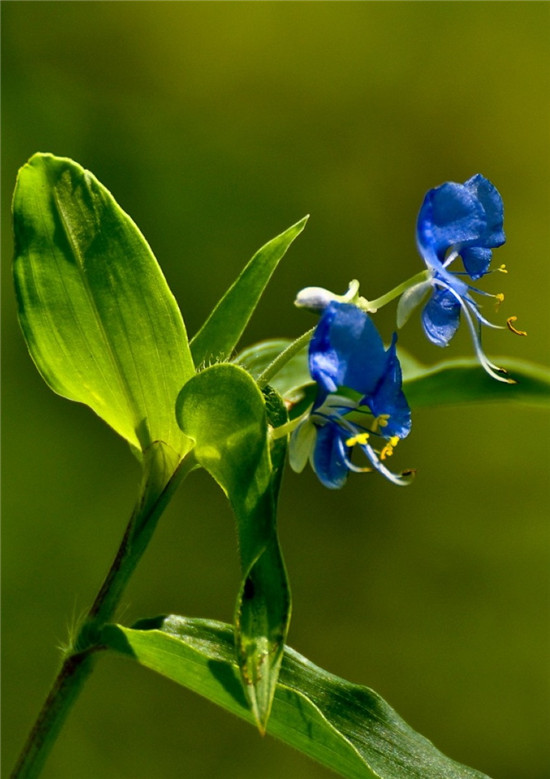The full power of the tongue.
Hedyotis diffusa is a plant of the family Hedyotis diffusa, which is distributed in the Yangtze River basin and the south. Next, let's take a look at the full efficacy of Hedyotis diffusa.

The rhizome of Hedyotis diffusa is very short, with soft fibrous roots. Stem erect or obliquely upward, 12-35 cm tall. The whole plant is smooth and glabrous, the leaves are basal or cauline, and the shape and size of the leaves vary greatly, from heart-shaped, broadly ovate, long-ovate to lanceolate, 2-7 cm long and 0.8-5 cm wide, apex short protruding tip or acuminate, base rounded or shallowly cordate, entire, with arcuate veins.
Petiole 10-20 cm long, base enlarged into a dehiscent sheath. The sheath is 2-4 cm long, with a tongue at the tip and about 0.7-1 cm long. Racemes drawn from middle of petiole. Here the petiole expands into a sheath. Peduncle short, 1-1.5 cm long, with 1 lanceolate bract at base.

Inflorescences erect in anthesis, recurved in fruit, flowers usually 3-5 (more than 10 rare), or 1-3, blue. Tepals ovate-lanceolate or oblong, 1-1.5 cm long, pedicel 1 cm long, 6 stamens. Capsule ovate to oblong, ca. 1 cm long. Seeds numerous, ca. 0.1 cm long, grayish brown, longitudinally striate.
Dormancy and germinated seeds have a long dormancy period, and dormancy is released in early spring. The threshold temperature of seed germination was 13-15 ℃, which was slightly higher than that of barnyardgrass. Variable temperature was beneficial to seed germination, and the optimum temperature was 20-25 ℃. Germination was inhibited above 30 ℃. Hedyotis diffusa is a typical aquatic weed, which can germinate under hypoxia and requires higher moisture. It germinates better under the condition of flooding or soil moisture oversaturation, and germinates slowly under moist conditions, but when the water layer is more than 1 cm, the germination becomes slower.

Content: fresh Hedyotis diffusa contains 97 grams of moisture, 0.6 grams of protein, 0.1 grams of fat, 0.6 grams of cellulose, 40 milligrams of calcium, 80 milligrams of phosphorus and a variety of vitamins.
Efficacy: clearing heat; cooling blood; diuresis; clearing heat and detoxification. Treat dysentery, enteritis, acute tonsillitis, gingival abscess, erysipelas, sores.
Indications of Hedyotis diffusa: cold and high fever; lung heat cough and asthma; pertussis; hematemesis; dysentery; enteritis; intestinal carbuncle; erysipelas; sores; sore throat; gums; wind fire red eyes; poisonous snake bites; poisonous mushroom poisoning.

Usage: internal administration: 15-30 grams of fried soup (30-60 grams of fresh products); or tamping with juice. External use: appropriate amount, tamping.
These are all the contents of the full efficacy of Hedyotis diffusa that I have summarized for you. I hope this article can help you. Please continue to follow us.
Related
- Wuhan Hospital Iron Tree Blooming Result Was Instantly Frightened by the Gardener Master
- Which variety of camellia is the most fragrant and best? Which one do you like best?
- What is the small blue coat, the breeding methods and matters needing attention of the succulent plant
- Dormancy time and maintenance management of succulent plants during dormancy
- Minas succulent how to raise, Minas succulent plant pictures
- What are the varieties of winter succulent plants
- How to raise succulent plants in twelve rolls? let's take a look at some experience of breeding twelve rolls.
- Attention should be paid to water control for succulent plants during dormant period (winter and summer)
- Watering experience of twelve rolls of succulent plants
- Techniques for fertilizing succulent plants. An article will let you know how to fertilize succulent plants.



